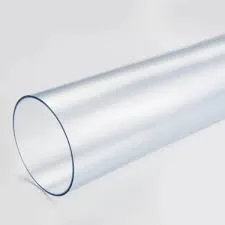Dec . 10, 2024 03:28 Back to list
PVC Pipe Fittings for Effective Plumbing Solutions and Improved Water Flow System
Understanding PVC Pipe Fittings A Comprehensive Overview
Polyvinyl Chloride (PVC) pipe fittings are an essential component in plumbing and piping systems, renowned for their durability, versatility, and cost-effectiveness. These fittings are used to connect various sections of piping, ensuring a seamless flow of liquids and gases in residential, commercial, and industrial applications. This article will delve into the different types of PVC pipe fittings, their applications, advantages, and installation considerations.
Types of PVC Pipe Fittings
PVC pipe fittings come in various shapes and sizes to accommodate different plumbing needs. Some common types include
1. Elbows These fittings allow for directional changes in the pipe layout. Common angles include 90 degrees and 45 degrees, enabling efficient routing of pipes around obstacles.
2. Tees Tees are used to create a branching point in a piping system. A standard tee fitting has three openings one for the main pipeline and two for side branches.
3. Couplings Couplings are used to connect two lengths of PVC pipe. They create a strong, tight seal that minimizes leakage.
4. Adapters These fittings help to connect pipes of different materials or diameters, facilitating a seamless transition in the plumbing system.
5. Caps and Plugs Caps are used to seal the end of a pipe, while plugs block the end of a fitting. Both are crucial for maintaining system integrity and preventing unwanted leaks.
6. Wyes A wye fitting is similar to a tee but allows for a smoother flow of fluid by creating a wider angle at the branch point.
Applications of PVC Pipe Fittings
PVC pipe fittings are widely used in various applications, including
- Residential Plumbing Homeowners rely on PVC fittings for water supply lines, drainage systems, and irrigation projects due to their lightweight nature and resistance to corrosion.
- Commercial Plumbing In commercial buildings, PVC fittings are used for sanitation systems, waste management, and even in HVAC systems where water management is required.
- Industrial Uses PVC pipe fittings are favored in manufacturing plants, chemical processing industries, and agricultural settings where chemical resistance and durability are paramount.
pvc pipe fitting

Advantages of PVC Pipe Fittings
1. Durability PVC is highly resistant to corrosion, impact, and chemical damage, making it an ideal choice for long-lasting piping systems.
2. Lightweight and Easy to Handle Compared to metal fittings, PVC is significantly lighter, which makes installation easier and reduces transportation costs.
3. Cost-Effective PVC pipe fittings are generally cheaper than alternatives made from metal or other materials, making them a budget-friendly option for a variety of plumbing needs.
4. Low Maintenance Due to their resistance to wear and tear, PVC fittings require minimal maintenance over their operational lifespan.
5. Versatility Available in a broad range of sizes and configurations, PVC fittings can be used in diverse applications, from simple plumbing to complex industrial systems.
Installation Considerations
While PVC pipe fittings are user-friendly, proper installation is crucial for ensuring a leak-free system. Here are some essential tips for installation
- Cutting Pipes Use a clean and straight cut for the pipes to ensure a proper fit into the fittings. A pipe cutter or a fine-toothed saw works best.
- Deburring Edges After cutting, remove any burrs or sharp edges to prevent damage to the fittings during installation.
- Applying Primer and Cement For a secure bond, apply PVC primer followed by PVC cement to both the pipe and the fitting, ensuring a strong, watertight seal.
- Allowing Cure Time After applying cement, allow sufficient time for the joint to cure before pressurizing the system or putting it into service.
- Inspecting Joints Regularly check the joints and connections to detect any signs of leakage or wear, ensuring long-term system reliability.
Conclusion
PVC pipe fittings are an integral part of modern plumbing systems, offering an array of benefits such as durability, cost-effectiveness, and versatility. From residential applications to industrial uses, understanding the different types of fittings and their proper installation can lead to efficient and reliable plumbing solutions. With the right knowledge and careful handling, PVC fittings can significantly enhance the functionality and longevity of piping systems.
-
Durable PP Rigid Sheet: Lightweight, Chemical Resistant Solutions
NewsAug.21,2025
-
PVC Grey Sheet for Extraction: Chemical Resistant & Durable
NewsAug.19,2025
-
Durable PVC Pipe Fittings for Plumbing & Irrigation Needs
NewsAug.18,2025
-
HDPE Steel Belt Reinforced Spiral Corrugated Pipe | High Strength
NewsAug.17,2025
-
HDPE Pipe Fittings: Durable, Leak-Proof Solutions
NewsAug.16,2025
-
Premium CPVC Sheet: High-Temp & Chemical Resistant Solutions
NewsAug.15,2025

